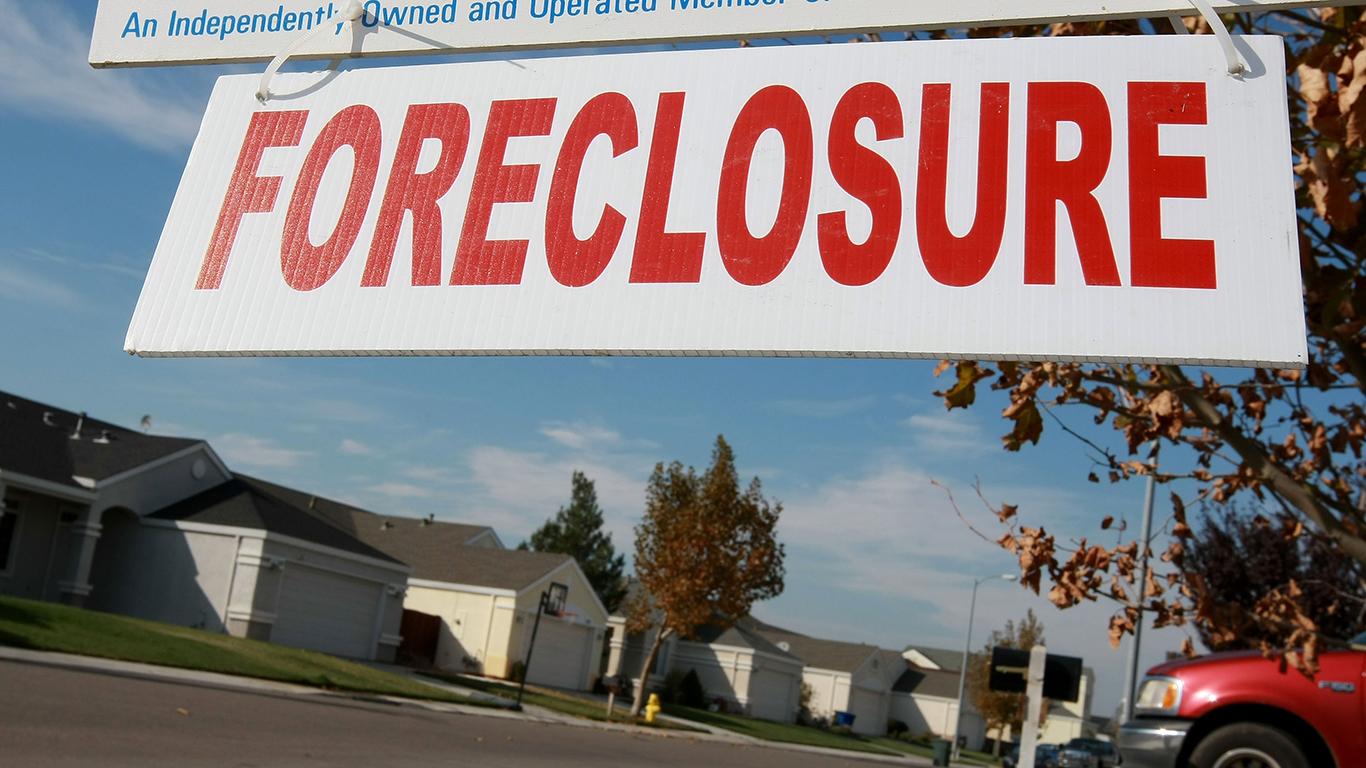Housing
Mortgage Delinquencies, Foreclosure Inventory Post August Declines

Published:
Last Updated:

The share of home mortgage loan payments that are 30 days or more past due fell from 4.6% in August 2017 to 4% in August 2018. That represents the lowest rate since March 2006. The foreclosure inventory rate fell from 0.6% to 0.5% in the same period.
The share of mortgages that transitioned from current to 30 days past due was 0.8% in August 2018, down by 0.1 percentage point year over year. This year’s rate remains somewhat lower than the transition rate of 1.2% just before the housing crisis struck and well below the peak rate of 2% in November 2008.
The data were reported Tuesday by CoreLogic in its Loan Performance Insights report. Early-stage delinquencies, defined as 30 to 59 days past due, declined from 2.0% to 1.8% year over year in August. The share of mortgages that were 60 to 89 days past due in July was 0.6%, down by 0.1 percentage point compared with last year’s rate. According to CoreLogic, measuring early-stage delinquency rates is important for analyzing the health of the mortgage market.
CoreLogic’s chief economist, Dr. Frank Nothaft, said:
With home-price growth building owners’ equity, and the low national unemployment rate providing opportunities for income growth, further declines in U.S. delinquency and foreclosure rates are likely in coming months. The CoreLogic Home Price Index for the U.S. recorded 5.7 percent annual growth in August. This price gain helped the average homeowner build about $16,000 in equity during the prior year and reduces the likelihood of a borrower transitioning from delinquency to foreclosure.
Frank Martell, president and CEO of CoreLogic, added:
Declines in delinquency rates are good news for America’s homeowners and mortgage lenders. However, risks that create loan default like natural disasters, overvalued markets and an eventual rise in unemployment remain in the market. CoreLogic Market Conditions Indicator data has identified more than one-third of metropolitan areas are overvalued, putting them at risk of price declines and rising delinquencies if local job losses should occur.
The states with the lowest 30-plus delinquency rate in August 2018 were Colorado (1.8%), North Dakota (2.0%), Oregon (2.0%), Idaho (2.2%) and Washington (2.2%). The 30-plus delinquency rate was highest in Mississippi (7.8%), Louisiana (7.1%), and New York (6.0%).
Among the largest U.S. metro areas, the highest 30-plus delinquency rates in August were posted in Miami (5.9%), New York (5.6%) and Houston (5.5%). Among these large metro areas, the lowest rates were reported in San Francisco (1.4%) and Denver (1.8%).
Are you ahead, or behind on retirement? For families with more than $500,000 saved for retirement, finding a financial advisor who puts your interest first can be the difference, and today it’s easier than ever. SmartAsset’s free tool matches you with up to three fiduciary financial advisors who serve your area in minutes. Each advisor has been carefully vetted and must act in your best interests. Start your search now.
If you’ve saved and built a substantial nest egg for you and your family, don’t delay; get started right here and help your retirement dreams become a retirement reality.
Thank you for reading! Have some feedback for us?
Contact the 24/7 Wall St. editorial team.